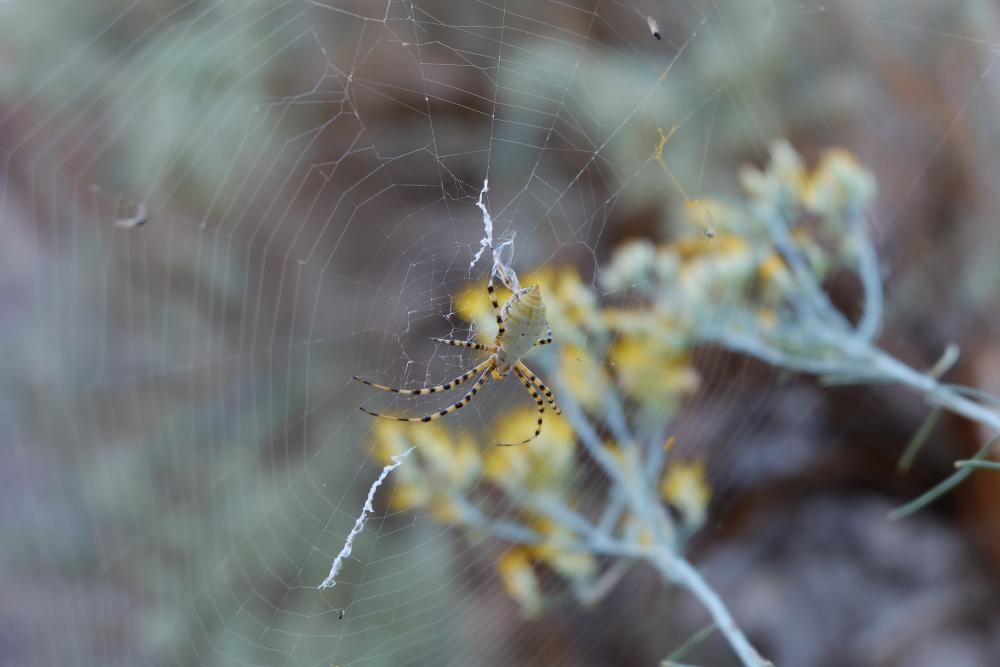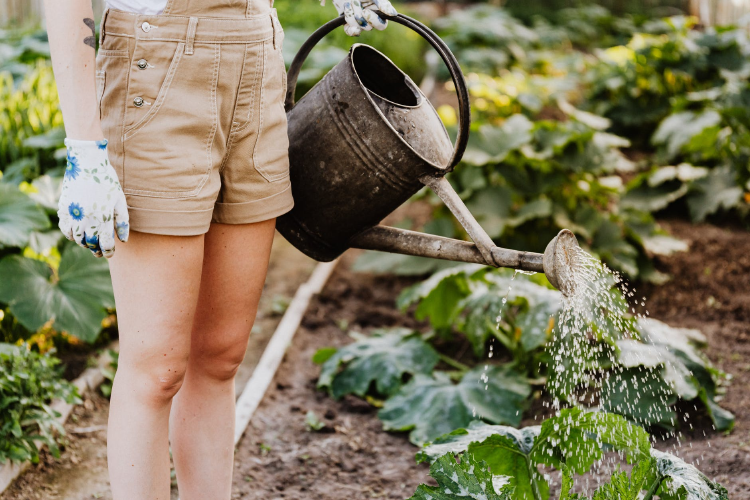
Are you afraid of spiders? Well, in case you are, you shouldn't be. Spiders are non aggressive creatures and usually their amount of poison can't harm you, at least this is the case for the ones going around your garden. That garden, yellow garden spider that tou can spot quite often, is one of the most common spiders around our plants, especially as warmer days come closer. Read on for some extra useful tips and reasons to keep garden, yellow spiders around your garden for the benefit of your plants and flowers.
Most definitely a fully grown garden, yellow spider can be a little bit intimidating or scary, right? Generally we see more of them over the landscapes of late summer. Their bright black and yellow colors within their large, circular webs are rarely hard to miss.
They seem to pop out of nowhere overnight! But despite their "intimidating appearance", these garden spiders can be really beneficial to your plants and flowers. So you better keep them around your garden zones, where they will naturally settle their webs and just observe how the balance of nature does its magic.
Like many other garden spiders, yellow spider are typically seen in our yards and gardens, this spider is considered to be a great ally indeed! It will take charge of any of those common landscape pests, bees, moths, beetles, wasps, and basically any other flying insect that gets caught in its web.
As sustainable warrior, we must definitely support the effortless harmonic balance that Nature can provide. So, we say no to pesticides or insecticides that are extremely toxic for humans, animals and the planet, too. We can significantly reduce the impact of out carbon footprint by means of more sustainable ways of gardening.

We covered this more extensively on our article Gardening Made Easy: How to start with your own Garden, but put into simple terms sustainable gardening lies on the foundations of little intervention in natural processes - no pesticides or chemicals that can harm the soil.
Whenever we talk about sustainability, we are basically trying to make visible some alternative ways of going about stuff like food growing, clothes manufacturing or gardening. Being sustainable always means producing a lesser impact on the planet compared to what we call "regular" methods.
Regular gardening normally includes tons of pesticides and chemicals to get rid of insects - like the yellow garden spider we mentioned- that can actually help your plants, flowers or vegetables grow better.
Besides, pesticides are extremely toxic for the soil because they can drain up to the pipes and even contaminate water. So, basically it's a regular practice but full of harmful effects.
So, we are gonna drop here some good advice for you to start with your sustainable garden , but don't forget to check our full article Gardening Made Easy: How to start with your own Garden
This is definitely the A in the ABC of gardening. Remember that plants and flowers need to feel comfy to fully grow and bloom. Sight is, then, one thing to consider. This means trying to keep your plants, flowers or veggies withing eye-sight so you can check whenever necessary.
Water, air circulation and sun exposure are also key factors for a perfect garden. Most vegetables, for example, need approximately six hours of sun per day! Direct sun exposure and regular watering need to be considered, too.

Is it hot all the year? Does it rain often? Does your garden have direct sun? These are some of the question you need to ask yourself before picking a plant or a flower to grow at home. Not all plants and flowers work well in any environment. Fortunately these days the internet helps a lot and surely you know a couple of people all over the net that can guide you on this.
The good news is also that the amount and diversity of seeds that we can find nowadays is so vast! So, you have no excuse.
This is probably the hardest part of gardening at home. But you'll gain experience as you do it. However, you can know approximately when to grow this or that according to seasons.
Gardeners usually recommend planting veggies, for instance, from late March to late May. But if you live in the south you should probably start earlier. The ultimate factor are the weather conditions, keep this in mind.
Having the possibility to grow your own vegetables is one of the most fabulous experiences a sustainable life styler can have. Let me tell you it's so rewarding and way much tastier than the veggies you can buy even at an organic market.
In our article 9 Easiest Vegetables to Grow, especially for Beginners you'll find and extensive list of organic seeds and their reviews to buy online.
Onions, tomatoes, potatoes, garlic and more seeds available for you online to start enjoying fresh veggies at home right now!
Going back to our garden, yellow spiders friends, fortunately, they are very beneficial in a vegetable garden. Remember spiders catch, pray and feed on all kinds of insects like flies, cucumber beetles, brown stink bugs, and sometimes even butterflies. They can be scary but they are not harmful to humans at all. Remember to thank them once you pick your flawless tomatoes for the freshest salad!
They are most active at nightfall so when the human eye looses sight, they gain it instead. So bear in mind to keep these garden spiders and related buddies safe and around for a successful harvest!

As we said growing your own veggies can be a very rewarding and satisfying experience. Fresh carrots, lettuce or onions ready for your meals. Pesticide and chemical free. Remember not to whoosh away our garden, yellow spiders friends!
If you are thinking about starting your own veggie farm at home, you can't miss 10 Fall Vegetables to Easily Grow at Home, for Beginners. This article thoroughly explores the top fall vegetables to Grow in your own spot.
Remember that gardening requires patience, but you won't have any problems if you follow our recommendations. Among the most popular fall vegetables we can find:
This green vegetable has grown pretty popular these days and with good reason. First of all, Kale is a super food because of its amazing properties: it is rich in calcium, iron, magnesium, zinc and and it's a rick source of vegetal proteins. Kale is also rich in Vitamin C, A and K. So, what are you waiting for buying some organic kale seeds and growing it at home?
This edible root is particularly easy to grow and, thus, we recommend to buy some seeds if you are a vegetable beginner farmer. Beetroots are mainly made from water, carbohydrates and proteins.
They taste delicious either raw in a salad or cooked in a soup. And not only they taste delicious, they are very healthy too! They can help with your overall blood flow while lowering blood pressure levels, and enhance physical performance.
Available in at least 10 different types of organic seeds, carrots are a must in any beginners' vegetable farm. Carrots are extremely healthy: they are a good source of beta carotene, fiber, vitamin K1, potassium, and antioxidants. They can help you lower cholesterol levels and improve your eye health, too.
If you want to know more about fall vegetables to grow at home and their properties, don't miss our post, then.

To wrap this up, let us share and recap some important aspects for the perfect vegetable garden
Hopefully we got you covered with some interesting dat to start your veggie garden at home, but if you are further interested in this topic, we recommend you reading Vegetable Garden Seeds: Grow your own Sustainable Garden. And please, let us know how your veggie garden is going! See you next time, warrior!